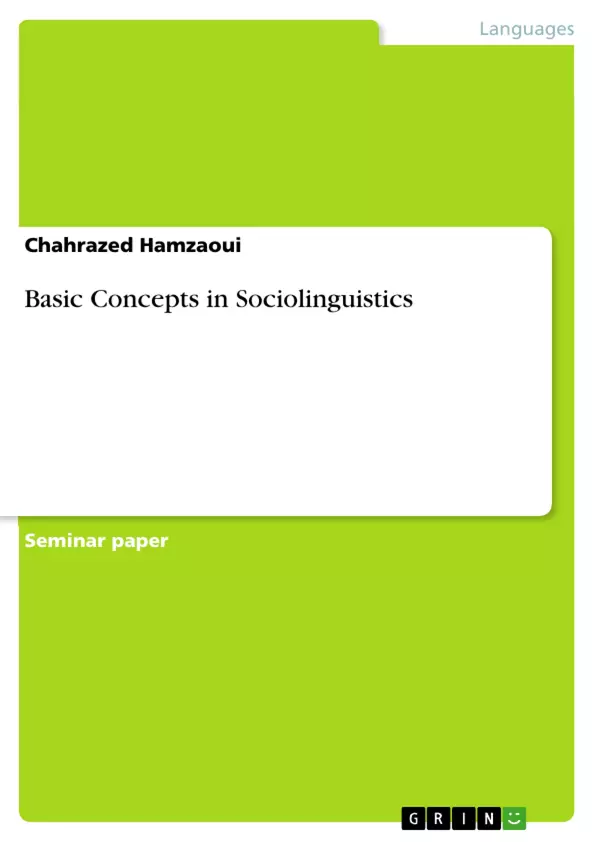The primary purpose of this e-book is to provide a resource for readers seeking an understanding of some basic notions in the field of sociolinguistics. Each notion draws on a variety of sources. The breadth of the published sources can be seen in the bibliographic information that is included by the end.
Inhaltsverzeichnis (Table of Contents)
- The Boundaries of Sociolinguistics
- Social Correlates
- Social class
- Gender
- Age
- Ethnicity
- Defining Groups
- Speech communities
- Social Networks
- Languages and Communities
- Languages, Dialects, and Varieties
- Mutual intelligibility
- Language Standardization
- Regional and Social Dialects
- Styles and registers
- The Linguistic Repertoire
- Contact Languages
- Pidgins and Creoles
- Lingua Franca
- Languages in Contact
- Diglossia
- Bilingualism and Multilingualism
- Code-switching
- Borrowings
- Language Maintenance
- Endangered Languages
- Language Death
Zielsetzung und Themenschwerpunkte (Objectives and Key Themes)
This e-book provides an introduction to fundamental concepts in sociolinguistics, drawing on a wide range of sources. The main objective is to offer readers a resource for understanding the relationship between language and society.- The distinction between micro-sociolinguistics and macro-sociolinguistics
- The influence of social factors on language use, including class, gender, age, and ethnicity
- The concept of speech communities and social networks
- The various ways languages change and adapt in contact situations
- The impact of language contact on the development of pidgins, creoles, and lingua francas
Zusammenfassung der Kapitel (Chapter Summaries)
- **The Boundaries of Sociolinguistics:** This chapter explores the distinction between sociolinguistics and the sociology of language, highlighting their differing perspectives on the relationship between language and society. It emphasizes that both fields require a systematic study of language and society to be successful.
- **Social Correlates:** This chapter examines the influence of social factors on language use, focusing on social class, gender, age, and ethnicity. It discusses how these factors contribute to variation in language use within a society.
- **Defining Groups:** This chapter introduces the concepts of speech communities and social networks, explaining how these groups are defined and how they influence language use.
- **Languages and Communities:** This chapter explores the relationship between languages, dialects, and varieties, examining concepts like mutual intelligibility, language standardization, regional and social dialects, and styles and registers. It discusses the linguistic repertoire, the range of language varieties available to individuals and communities.
- **Contact Languages:** This chapter focuses on languages in contact, examining the development of pidgins and creoles, as well as the role of lingua francas in facilitating communication across language boundaries.
- **Languages in Contact:** This chapter explores the various ways languages interact and influence each other, including diglossia, bilingualism, multilingualism, code-switching, borrowings, language maintenance, endangered languages, and language death.
Schlüsselwörter (Keywords)
This e-book delves into the complex interplay between language and society, focusing on key concepts such as sociolinguistics, sociology of language, speech communities, social networks, language variation, contact languages, pidgins, creoles, lingua francas, diglossia, bilingualism, multilingualism, and language endangerment.
Fin de l'extrait de 110 pages
- haut de page
- Citation du texte
- Chahrazed Hamzaoui (Auteur), 2023, Basic Concepts in Sociolinguistics, Munich, GRIN Verlag, https://www.grin.com/document/1350795
Lire l'ebook



